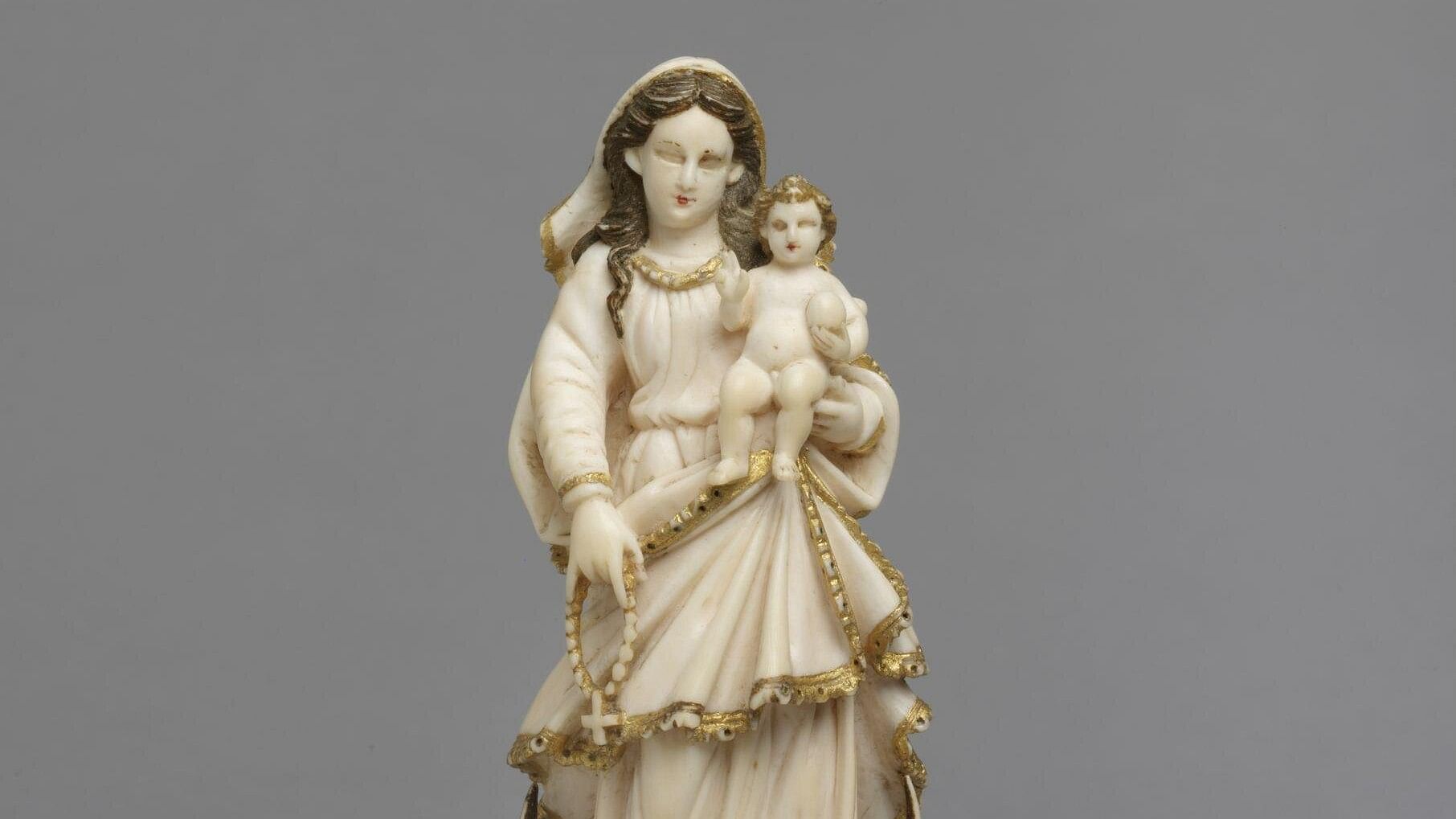
The Virgin and Child, Goa (1650), ivory.
Pic courtesy: The Victoria And Albert Museum, London
With eyes closed, head gently tilted downwards and hands pressed together in prayer, the sari-clad figure of a woman, resembling the Hindu goddesses painted by Raja Ravi Varma, stands atop a biblical crescent moon. A striking combination of elements from Christian iconography, indigenous Goan traditions and modern Indian art, this early-20th-century ivory statuette of Nirmala Mata, meaning Immaculate Mother — as the Virgin Mary is known in certain parts of India — exemplifies the rich cosmopolitanism of Indo-Portuguese art in colonial Goa.
After the conquest of Goa by the Portuguese in the early 16th century, Christian missionaries arrived in droves to spread the gospel of Christianity among Goans. They built churches and directed local artisans to craft Catholic images — such as those of the Crucifixion of Christ, the Virgin Mary, and the Madonna and Child — in wood and ivory, ranging from large wall pieces to portable icons. The Jesuits, in particular, adopted a collaborative spirit in the production of such artefacts. They brought prints of iconographic images from Europe as pictorial references but allowed for stylistic interpretations by indigenous artisans. Consequently, local artisans — drawing inspiration from preexisting Hindu, Buddhist and Jain religious images in the region — reimagined common Christian figures such as Jesus, Mary and various saints in sculptural styles peculiar to the subcontinent.
This cultural interaction led to the emergence of a unique Indo-Portuguese iconography. Particularly notable was the depiction of the Christ Child as the Good Shepherd, an image which has no precedents in European Christian art. The main figure of the Christ Child is depicted as sitting atop a rocky outcrop, often decorated with indigenous flora and fauna. In contrast to the typical horizontal layout in European traditions, this vertical, tiered form is borrowed from the towers and superstructures of Hindu temples. The Christ Child himself echoes a young Krishna with his childlike features. His serene face, closed eyes and inclined head gently supported with two fingers are reminiscent of the pensive bodhisattva iconography common in 6th-and 7th-century Asia.
Such unique portrayals of familiar Christian icons, combining Indian artistic styles and European motifs, are canonical to both South Asian and Christian art. Coupled with the costly use of ivory, their exclusive compositional and aesthetic typology rendered Goan ivory statuettes highly valuable. They found favour among rulers and elites and were frequently used as diplomatic gifts. Today, these statuettes are preserved in collections worldwide, including those at the Salar Jung Museum, Hyderabad; the Pilar Museum, Goa; the British Museum and Victoria and Albert Museum in London; and the Walters Art Museum in Maryland.
MAP Academy
Discover Indian Art is a monthly column that delves into fascinating stories on art from across the sub-continent, curated by the editors of the MAP Academy. Find them on Instagram as @map_academy